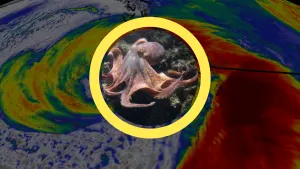
Western Canada was one of the coldest places on Earth in November
Heat and cold divided Canada in half last month, while North America was still warmer than average despite the polar vortex.
Globally, last month only barely made it into the top ten warmest Novembers on record. Locally, though, the polar vortex made the western half of Canada into one of the coldest places on Earth for the month.
With the rare triple dip into La Niña going on right now, global temperatures have been on the moderate side throughout 2022 so far, and the month of November was no exception.
NOAA and the Copernicus Climate Change Service both ranked it as the 9th warmest November, globally, while according to NASA's data it was 11th warmest, and the Japanese Meteorological Agency has it as the 7th warmest in their records.

Global average temperatures for the month of November from 1880-2022. (NOAA NCEI)
However, across Canada and the United States, a different story played out during the month.
According to NOAA, parts of western North America experienced the coldest November they've seen in the past 40 years!

The colours on this map denote how far above (shades of red) or below (shades of blue) the 1991-2020 average temperatures were during the month of November, 2022. Temperatures in Western Canada were 4-5°C below that average, making it one of the (relatively) coldest places on Earth for the month. (NOAA NCEI)
Remarkably, NOAA's records show that, despite this, it was still a warmer-than-normal month for North America.
Western Canada did see some of the (relatively) coldest temperatures on the planet. However, when tallying everything up for the month, the warmth across eastern parts of Canada and the United States, as well as in northwestern Canada and Alaska, was still enough to offset that cold.
(Thumbnail image courtesy NASA GISS)












